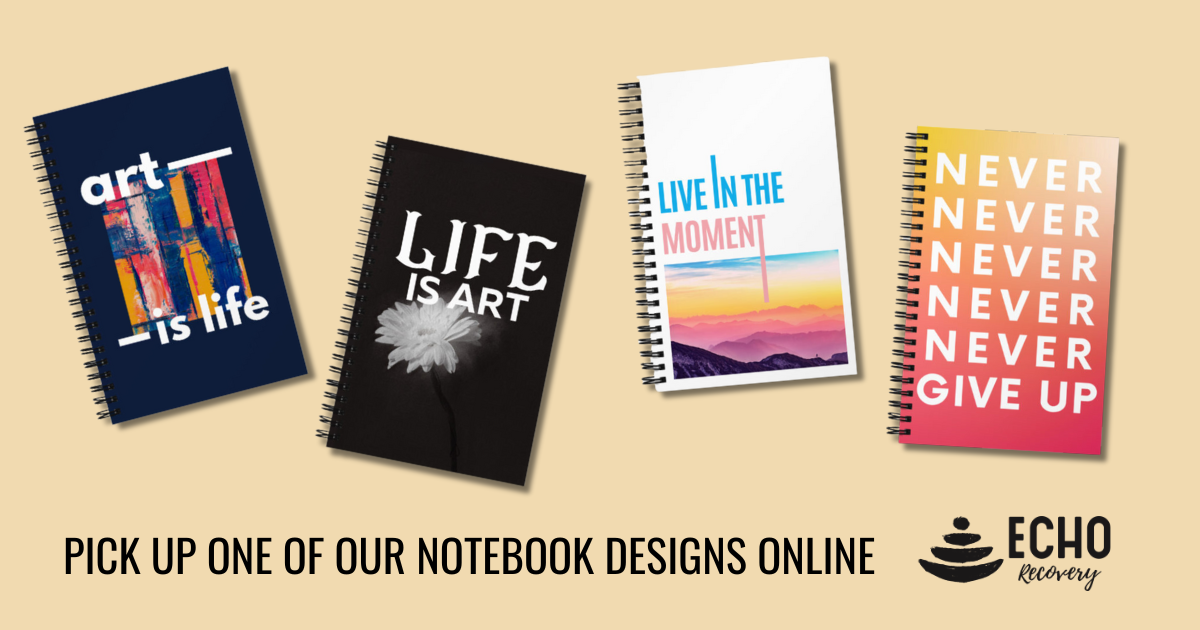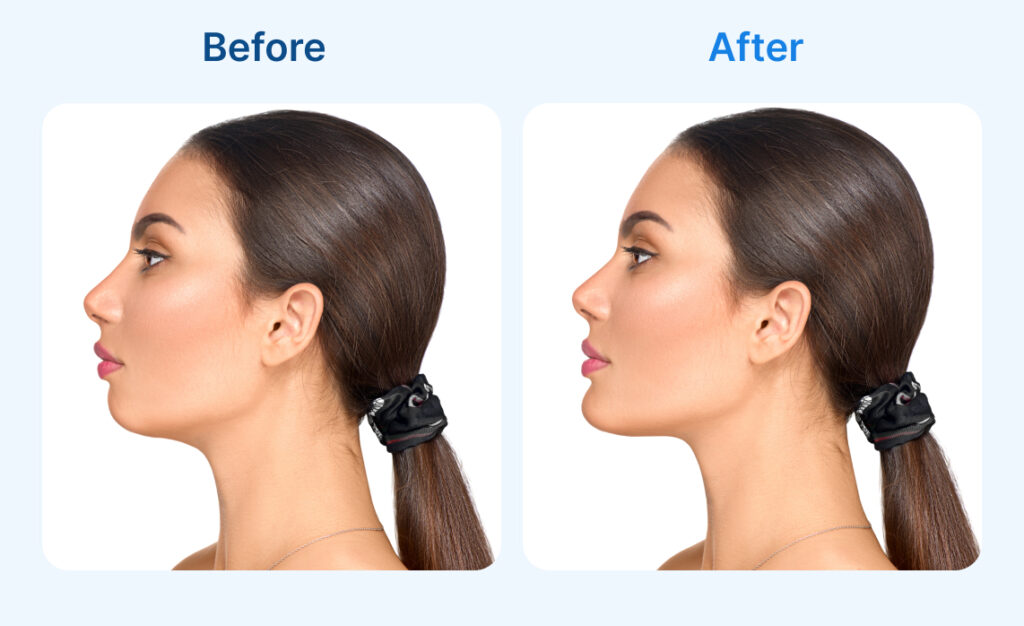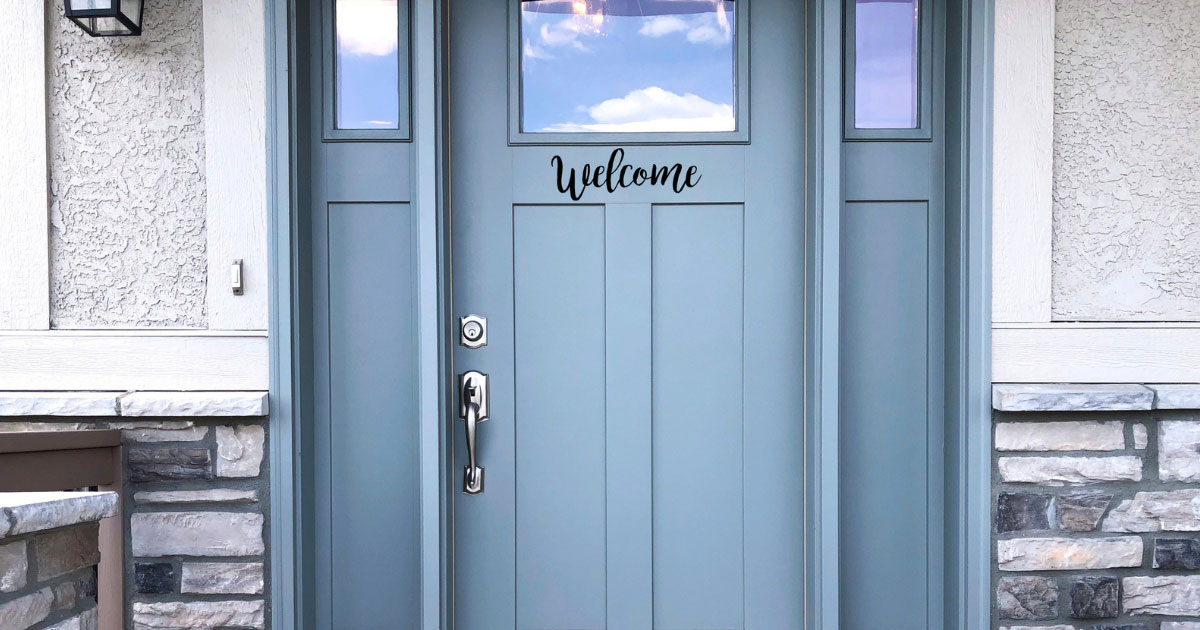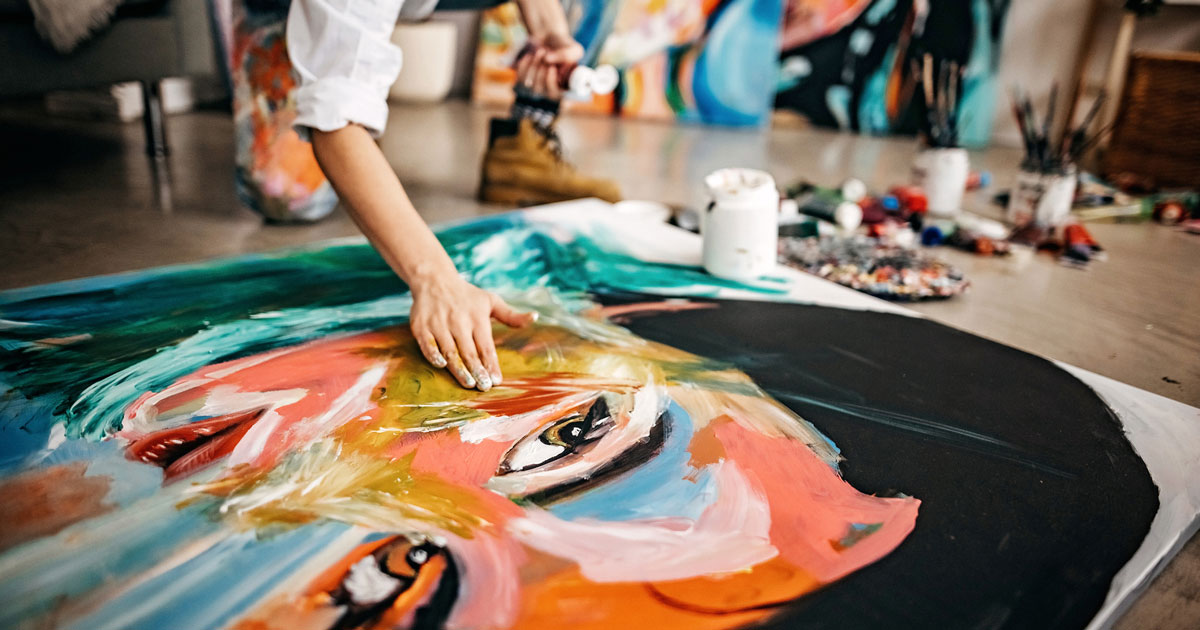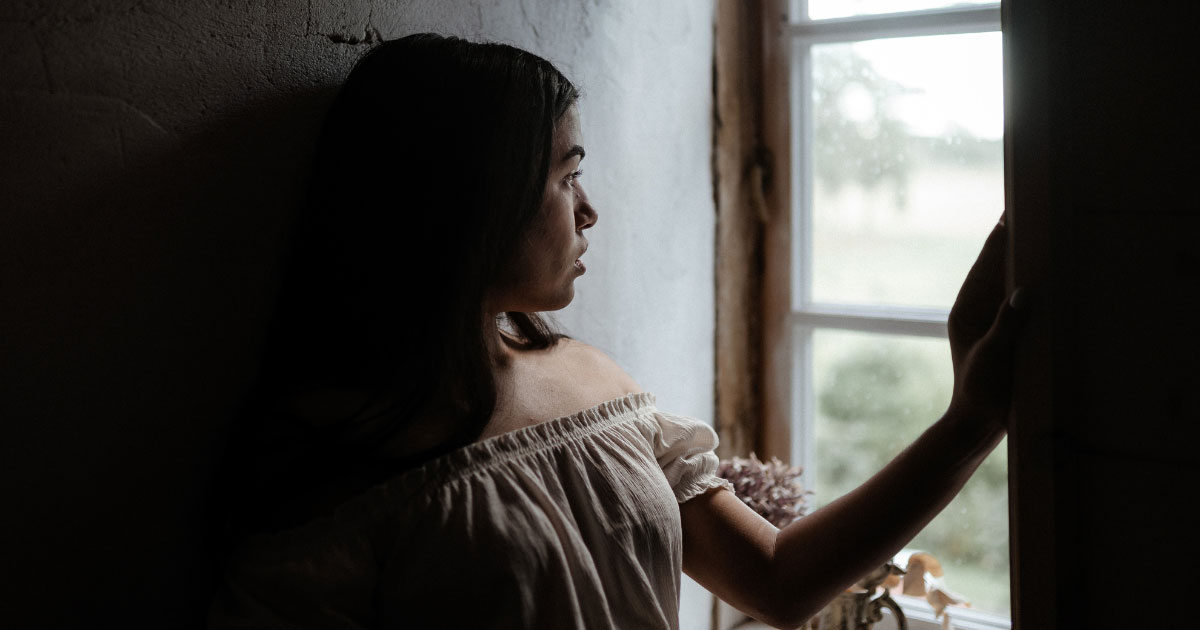Art journaling can help individuals in recovery explore their deepest emotions through a safe and creative outlet. The post Art Journaling Prompts for People in Recovery appeared first on Echo Recovery.
Every road to recovery is unique. While there are general tools and support systems, nearly everyone can benefit from, finding a therapeutic technique that you truly click with can provide the best benefits for maintaining and thriving in a sober lifestyle.
Self-discovery and self-reflection are two critical aspects of recovery. When a person is struggling with a substance use disorder, they often neglect their true physical, mental, and emotional needs. Who they are becomes defined by the substance. Developing the ability to look internally and reflect on what you find is key to regaining your sense of personhood. In recovery, finding yourself again can be a difficult but rewarding process.
Consider Journaling for Recovery
One useful tool for rediscovering yourself during recovery is the concept of journaling. There is no wrong way to journal, and the most effective way for you to journal can vary depending on your personal style. Some individuals prefer to write in an open format, jotting down their day and experiences. Others like to have specific prompts that get them thinking about life and sobriety.
Another option that is growing in popularity is art journaling. Art journaling for addiction recovery provides an opportunity for you to partake in self-reflection while also tapping into your creative side. If you’re in recovery, art journaling can help you find inspiration and purpose as you move forward on your sober journey.
Art Journaling for Addiction Recovery
Art journaling is one of many forms of art for recovery. Art therapy is an effective tool for helping individuals with substance use disorders explore their feelings without fear of judgment or confrontation. In the early stages of recovery, there are often many emotions that rise to the surface after having been suppressed by drugs or alcohol.
Facing these deep emotions can be overwhelming, especially as recovery is beginning. However, the ability to face and move on from these emotions is key to maintaining recovery long-term. Art journaling provides an opportunity to use creativity to access emotions and begin to understand the root cause of traumas.
So what is an art journal? Also referred to as a visual journal, an art journal functions much like a traditional journal. With traditional journaling, you are writing down your thoughts and feelings. With an art journal, you are expressing yourself through sketches, doodles, drawings, clips of pictures and magazines, and any other way that you can creatively collect your thoughts and feelings.
Requirements for Art Journaling
Fortunately, you do not need to be a great artist to benefit from participating in art journaling. Just like traditional journaling, this is a practice that is designed to be personal and will be seen only by you and those you wish to share with. There are no right or wrong ways to journal, and there is no worry that your work will be judged or criticized. The purpose of an art journal is to have an emotional outlet that works for you.
For many, putting into words how you’re feeling and what you are experiencing can be too difficult. In that instance, drawing what you are experiencing may provide the outlet needed. As with traditional journaling, though, consistency is key. You’ll want to consider a mode of creativity that makes sense for daily reflection. Larger artistic projects such as sculpting or painting can be therapeutic, but a journal is more of a daily tool that can change with your moods and feelings.
Benefits of Art Journaling for Addiction Recovery
Art journaling can provide numerous benefits for individuals in any stage of addiction recovery. Journaling can be a helpful tool in recovery because it allows people to explore their deepest emotions without fear of judgment or criticism. Journaling can help uncover triggers, which in turn can help people face those triggers to avoid relapse. Journaling also adds a bit of routine to a person’s day, which can help them develop a schedule conducive to sober living.
There are other major benefits of art journaling, and understanding them can help you decide if art journaling may be a good fit for your needs.
Vulnerability
People in recovery often need to slowly tear down walls that took years to build. This is because when a person has a substance use disorder, they tend to isolate themselves from others. Many people don’t want their addiction to be apparent, so they hide their true selves and develop a defense mechanism when people try to get too close. Addiction can also provoke feelings of shame, which further hinders the ability to be authentic and honest.
Art journaling is a safe medium for facing instead of suppressing emotions. This can be beneficial in recovery because suppressing emotions can negatively impact mental, emotional, and physical health. Art journaling presents an opportunity to be authentic with your deepest thoughts and feelings at a pace that is comfortable for you.
Freedom
Expressing yourself through any medium can feel liberating, and this is especially true in recovery. For example, when you vent to a friend about something that is bothering you, you usually feel lighter and have better clarity about the situation. In the same way, art journaling can help you free your emotions at your leisure.
Opening up in recovery can be challenging, which is why art journaling can be so beneficial. This form of therapy allows you to release negative emotions, evaluate your thoughts, understand the problems you are facing, and participate in a creative opportunity that you enjoy.
Self-Reflection
Art journaling is designed to help you uncover long-buried emotions, but it is also designed to help you develop an understanding of yourself. Especially for individuals in recovery, finding yourself again can feel overwhelming. For months, if not years, substance use has defined who you are, but finding yourself again can be facilitated through art journaling. You can rediscover who you are, what you enjoy, and what brings you happiness. This is a vital tool for self-care.
Goals and Intentions
Recovery should be a time when people move on from the behaviors, thought patterns, and destructive activities of the past. For that reason, recovery is about setting goals, large and small, that help keep you motivated and focused on what you want from the process. An art journal is the perfect way to visualize your goals. You can draw positive goals and outcomes you would like to see in your future.
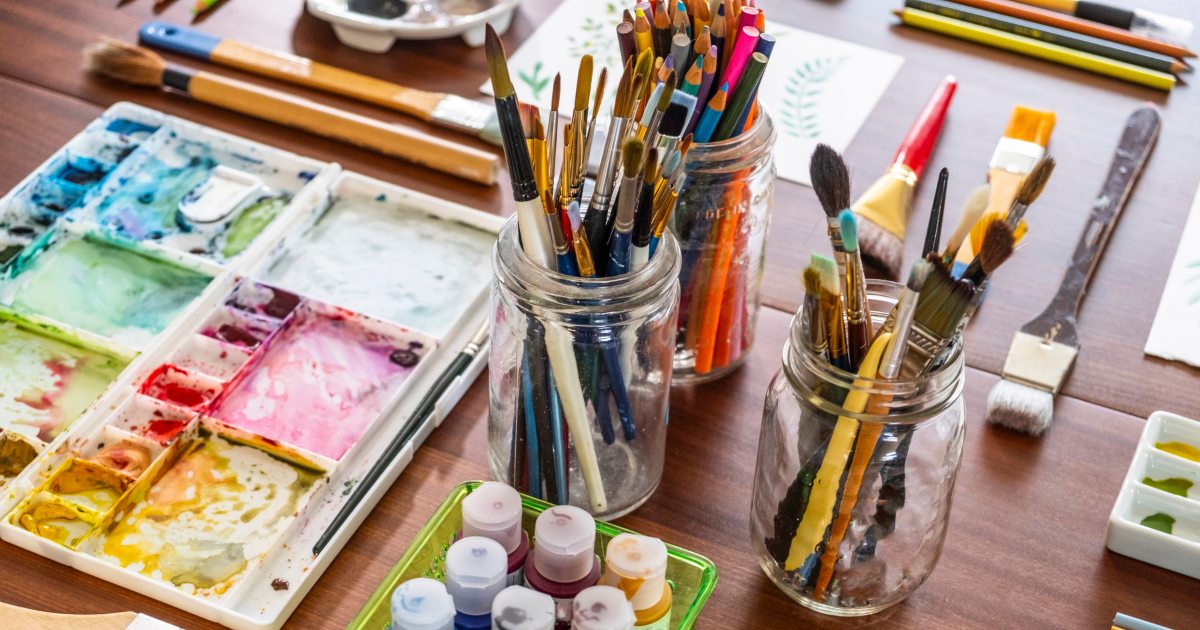
How to Start an Art Journal
When you are considering starting an art journal, it can be beneficial to first think about the way you would normally take notes. Do you like to work with colors or keep it simple? Do you prefer handwriting your notes or using a digital platform? These questions can help you determine what kind of art journal would be best for you. To get started:
Gather Materials
It is helpful to have a dedicated notebook for your sobriety art journal. Since art can demand more than a single piece of paper, use a visual-journal-specific notebook, or consider purchasing thicker paper. You’ll also want to round up your preferred art materials. This can include paint, pens, pencils, crayons, markers, scissors, glue, pencil sharpener, and anything else you might need to create your work. If you would prefer to create digitally, look into platforms and programs that would allow you to easily access your art and keep it organized.
Journal with a Plan and Purpose
Art journaling is a way to release your inner thoughts and feelings without rules and restrictions. However, you may want to consider setting yourself some basic boundaries, especially at first, since getting into this process can feel overwhelming. It is easy to overthink your art journal, essentially putting it on hold before you can even begin.
To help, you may want to make some decisions before you start, such as what medium you prefer, which colors you want to use, and even how large your project will be.
Find a Topic
Specific art journaling ideas aren’t always necessary. Oftentimes, you’ll find inspiration from daily experiences, persistent thoughts, or familiar feelings that you want to express. However, some days, finding a topic can be more of a challenge. On these days, a great list of potential journal prompts can come in handy. Prompts are a great way to ease into the practice of art journaling and could offer a source of inspiration you wouldn’t consider on your own.
Get Creative
Once you have all the materials you need, a prompt or focus, and have set boundaries on how you want to create, you are ready to get creative. There are endless possibilities when it comes to art therapy. Your journal is designed for you, so use it as you need.
Art Journaling Prompts for Addiction Recovery
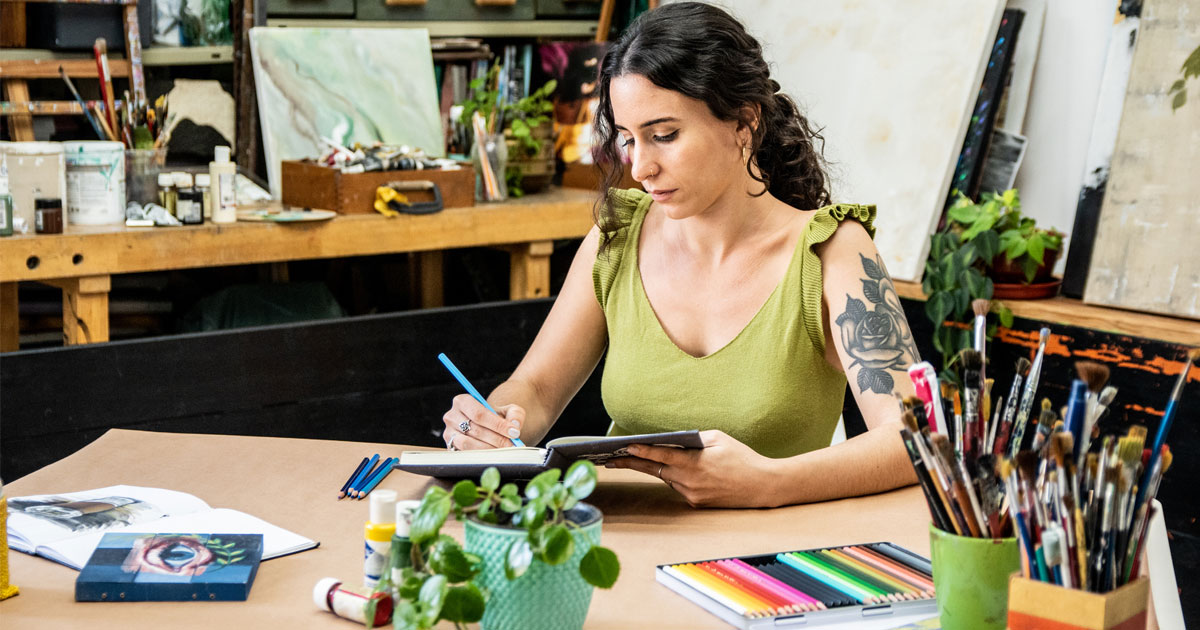
To get you started, we have compiled a list of prompts that have helped others get the most from their art journal. Prompts are a great way to explore topics you might not consider yourself and can be great to have handy on days when inspiration feels lacking.
Tips for Art Journaling
To get the most out of journaling, it is recommended to make creating in your journal part of your regular routine. Journaling on a regular basis is beneficial for self-reflection and dealing with the various emotional triggers you can face on a daily basis. It also provides an outlet when you need it, whether you’ve had a great day or a difficult one.
We also suggest that you consider keeping your art journal private or being careful about who you choose to share it with. The purpose of an art journal is to allow you to explore difficult, deep emotions and struggles you may face in your healing journey. Even individuals with the best intentions could make a comment that strikes you the wrong way, opening the door for regression when it comes to honesty and vulnerability. Like a diary, an art journal is designed for your eyes only.
You should also consider experimenting with different mediums. Working with different mediums presents a healthy challenge and can prevent feelings of repetition and boredom. You may even discover you have a knack and passion for a certain previously undiscovered medium.
Creativity Supports Addiction Recovery
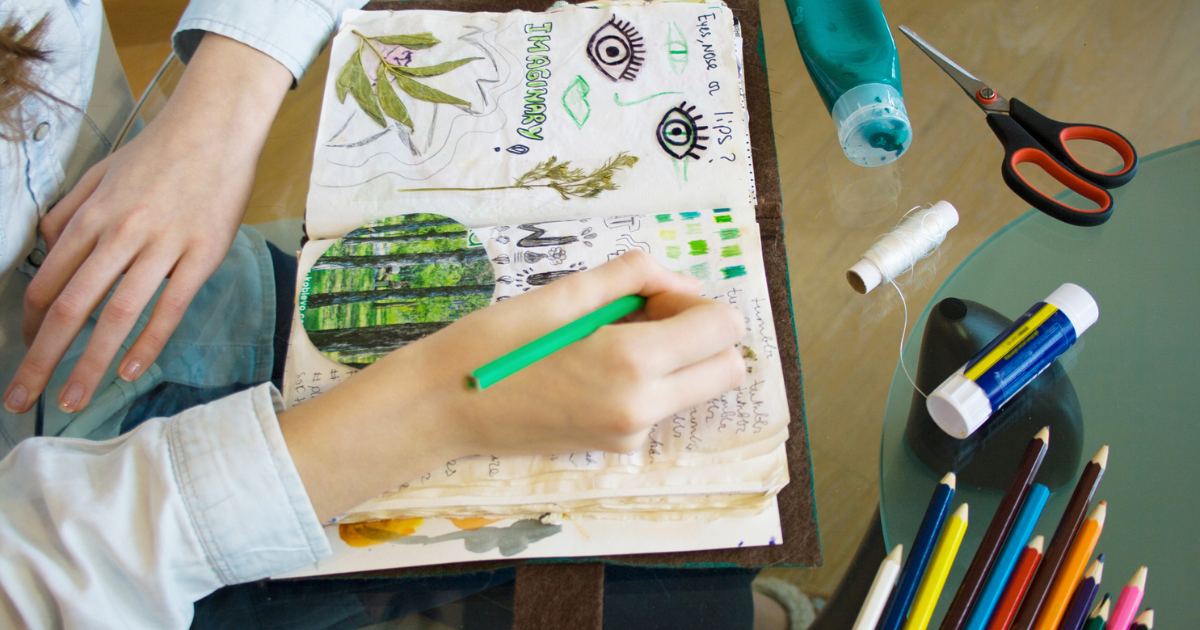
Skilled artists and interested beginners alike can find healing and a sense of self through art journaling. While any type of journaling is personal, confidential, and judgment-free, art journaling can be more accessible than written journaling for many people. It also allows people to explore their deepest emotions, navigate triggers, and develop healthy coping mechanisms. See our Art for Recovery resource for more information and support.
If you’re in recovery, consider art journaling as a way to get creative while exploring yourself in your new life, expanding beyond the written word to truly express yourself on a whole different level. The best part? You don’t have to consider yourself artistic to benefit from art journaling. All you need is a willingness to try, a few tools, and a commitment to making it part of your daily routine. Visit our Art Corner to find artists, classes, and more.
The post Art Journaling Prompts for People in Recovery appeared first on Echo Recovery.



